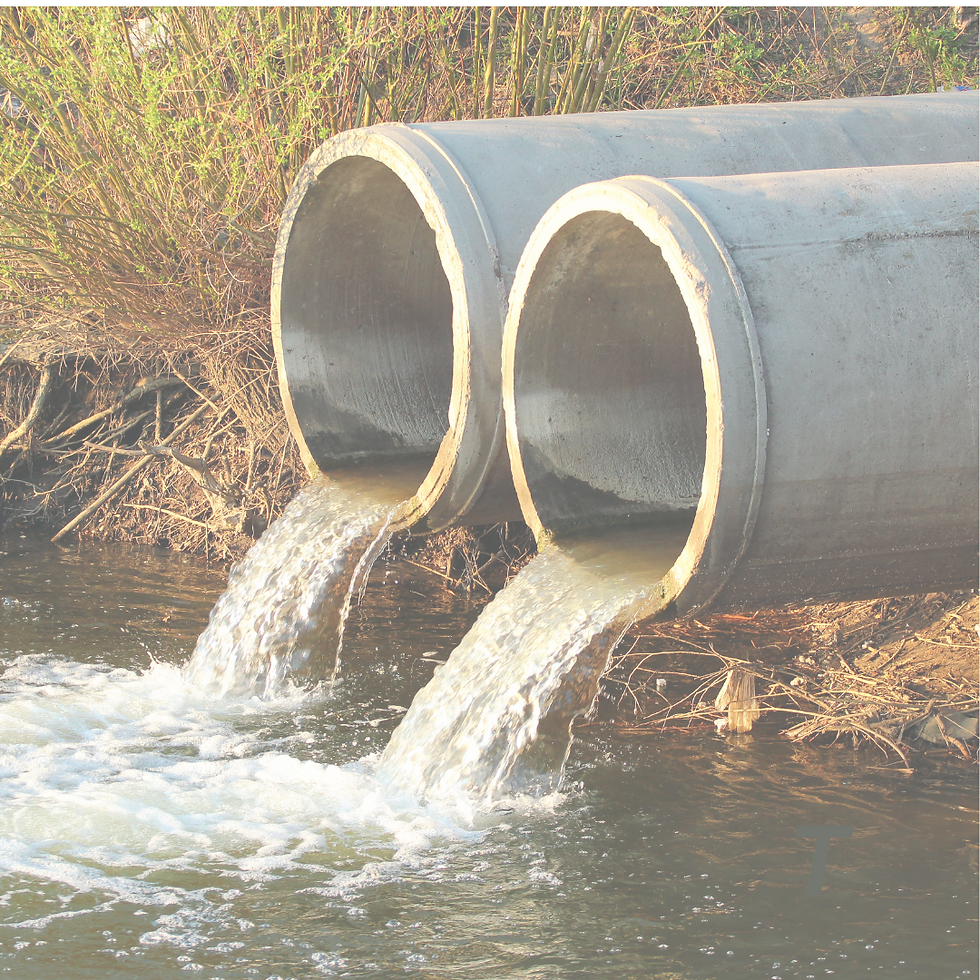The Hidden Health Risks of Drinking Tap Water
- laura5841
- Sep 23
- 2 min read

In September 2025, Campbell Soup Company was sued for violating the Clean Water Act and they admitted to discharging chemical waste in excess of their daily limits into the Maumee River which feeds Lake Erie.
The discharge water contained e.coli, phosphorus, grease, ammonia and residual chlorine.
One of the main pollutants the environmental groups are concerned about is phosphorus, which can lead to toxic algae. "It's this nasty, green slime that covers a huge portion of the western part of Lake Erie and it’s incredibly toxic to humans and wildlife and pets."
For many households, tap water is the most convenient and affordable way to stay hydrated. But what flows from your faucet isn’t always as clean or safe as it looks. This isn’t the first time large industries have been found discharging chemical waste into our drinking water reservoirs.
While most municipalities treat water to meet basic safety standards, they're unable to remove the plethora of chemicals that pollute the wate and over time, they may affect your health.
1. Chlorine and Disinfection Byproducts
Most cities add chlorine to tap water to kill bacteria and viruses. While effective for disinfection, chlorine doesn’t come without risk. When it reacts with natural organic matter in the water, it can form byproducts called trihalomethanes (THMs). Long-term exposure to these chemicals has been linked to an increased risk of certain cancers and can irritate the skin, eyes, and lungs.
2. Heavy Metals
Aging infrastructure, especially old pipes, can introduce lead, copper, and other heavy metals into your drinking water. Lead is particularly dangerous—even small amounts can impair brain development in children, cause learning difficulties, and contribute to kidney and cardiovascular problems in adults.
3. PFAS – “Forever Chemicals”
PFAS (per- and polyfluoroalkyl substances) are synthetic chemicals widely used in nonstick cookware, packaging, and firefighting foam. Known as “forever chemicals” because they don’t break down easily, PFAS have been detected in tap water across North America. Exposure has been associated with hormonal disruption, weakened immune response, fertility issues, and certain cancers.
4. Microplastics
Recent studies show tiny fragments of plastic, known as microplastics, are present in much of our drinking water. While research on their full impact is ongoing, early findings suggest they may carry harmful chemicals into the body and contribute to inflammation and oxidative stress.
5. Pharmaceutical Residues
Traces of medications—such as painkillers, antibiotics, and antidepressants—have been found in public water supplies. Although usually present at very low levels, the long-term effects of constant low-dose exposure are not well understood.
Protecting Yourself and Your Family
The risks in tap water vary depending on your location, plumbing, and municipal treatment practices. But the fact remains: “safe” doesn’t always mean risk-free.
Here are a few steps you can take:
Check local water quality reports for contaminants in your area.
Use reverse osmosis water filtration designed to remove chlorine, heavy metals, PFAS, and other pollutants.
Flush your taps for a few minutes before drinking if water has been sitting in the pipes.
Stay informed—water quality can change as infrastructure ages and environmental challenges grow.
✅ Clean water is essential for health, and while tap water is convenient, being aware of its risks can help you make better choices for your long-term well-being.




Comments